Improving City & Country Life
One progressive campaign in the state was for improved roads and state highways. People believed good roads would help improve life in both the city and country. Most roads that existed were dirt roads.
Although this issue may seem so important today, during the early 1900s, the costly proposal to improve, build, and expand roads was quite controversial.
In 1901 Tennesseans joined the national movement to improve highways by forming their own state unit, Tennessee Good Roads Association(TGRA).
In 1911 local Tennessee businessmen began pushing for a state highway that would go from Memphis to Bristol. This highway would connect to other federal routes and -cover- more than 500 hundred miles of Tennessee land.
The group gained support by driving across the state, publicizing the horrible road conditions. In response to this and other demands for better roads, the state created the Tennessee Highway Department in 1915. This department designated state routes, and prioritized their construction.
During this period, some new roads were constructed in rural areas from county seats to outlying communities. But there was still only 500 miles of paved roads in the state.
TGRA campaigned for a state bond issue for roads under the slogan, “Lift Tennessee Out of the Mud,” but it was defeated.
Major road projects across the state were not undertaken until after 1920 under Governor of
Austin Peay . When Governor Peay began his term, the expansion and improvement of Tennessee’s paved roads became a major priority.
Peay proposed building roads using gas taxes, and vehicle registrations on a “pay as you go” basis. Peay’s plan ended up costing $75 million, but did not put the state in debt.
The good roads program helped create a new industry for the state—that of tourism. Peay helped establish the state’s number one tourist attraction: the Great Smoky Mountains Park. The city of Knoxville, states of Tennessee and North Carolina, and private funds purchased land for the park during the 1920s. In the 1930s, the federal government took over the park.
Nashville Mayor Hilary Howse won election in 1909 on the platform that he would not enforce prohibition within the city. This earned him support from both the alcohol industry and working-class citizens. Thanks to this support, Howse eventually created a political machine, rewarding allies with political positions and enticing voters with acts of charity like buckets of coal or boxes of groceries.
In spite of moral criticism regarding city vices, Howse’s emphasis on health, schools, nutrition, and hospitals attracted voters, which resulted in a stable city government for over 20 years.
Edward Crump of Memphis created a political machine in the city that benefited public facilities for both blacks and whites alike. Under his administration, African American medical personnel were placed in segregated schools, children of jailed parents could receive aid, lynchings decreased, and public facilities exclusively for African Americans were established.
Additionally, during the early 1900s, streetcar transportation became more widespread, pot holes in the streets were paved, electric lights and telephone lines were placed underground, ornamental lights decorated Main Street, and old buildings were torn down.
Knoxville politics were also changing as well, but the changes didn’t benefit the population as much. Residents in 1912 voted to end the offices of mayor and alderman and replace them with a five-member city commission and an elected city manager.
The commission wanted to keep taxes low, but this reduced the amount of city improvements they could fund. Although some improvements such as garbage collection, road paving, and a city hospital were implemented, corruption was rampant. The commission was disbanded by 1930.
Like urban areas, rural ones in Tennessee also underwent major changes during this time. George Lafayette Carter was a railroad and coal entrepreneur who founded the modern town of Kingsport in Northeast Tennessee, in 1905. Carter hired expert engineers and city planners, creating one of the most modern cities to date in the region. Later he helped establish East Tennessee State University as a regional educational center.
Alcoa was also a company town developed near the turn of the century by the Aluminum Company of America. Although black and white workers were housed in segregated communities, they were provided access to new public facilities and programs like schools, libraries, and health care.Picture Credits:
- Photograph showing the Memphis Police Motor Cycle and Auto Department. This photo was taken in 1920 in Memphis. The police officers are shown in front of the Central Police Station. Tennessee State Library and Archives.
- Photograph of the Memphis-Bristol Highway. This photo was taken near Rockwood in Roane County, Tennessee in 1920. This photograph shows why people wanted good roads. Tennessee State Library and Archives.
- Photograph showing two promoters for better roads in Tennessee. The two men are posed beside an automobile. The sign on the back of the car reads, “Memphis to Fulton Good Roads Boosters.” This photo was taken in West Tennessee in 1905. Tennessee State Library and Archives.
- Photograph of downtown Nashville. This photo was taken in 1919 and shows Union Street between 4th and 5th avenues. Tennessee State Library and Archives.
- Photograph showing passengers on the bus line from Shop Springs, Watertown, and Smithville, Tennessee. This photo was taken in 1910 in Lebanon, Tennessee. Tennessee State Library and Archives.
- Photograph showing the Montvale Road being black-topped. This photo was taken in 1900 in Maryville, Tennessee. The workers use a horse and buggy to pave this section of the road located near Broady Lane. Blount County Public Library.
- Photograph of a couple in a runabout automobile possibly made by Packard. A runabout was a small car that sat two people and did not have a hood. This photo was taken in 1905 and shows a man and a woman seated inside the car. Tennessee State Museum Collection, 85.106.2.
Photograph of Mayor Hillary Ewing House. Tennessee State Library and Archives.
Photograph of Governor Austin Peay. Tennessee State Library and Archives.
Photograph of Edward Hull Crump. Tennessee State Library and Archives.Confronting the Modern Era >> Life in Tennessee >> Making Life Better >> Improving City & Country Life
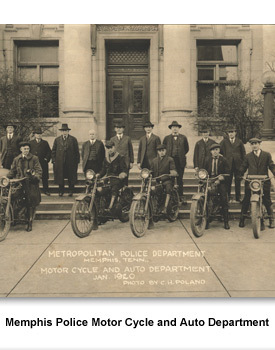
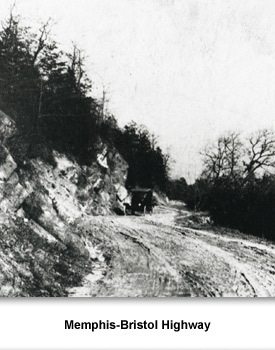
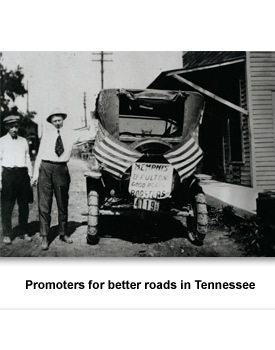
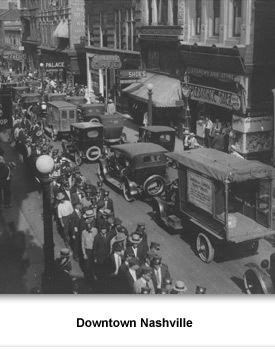
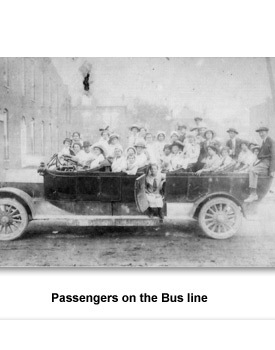
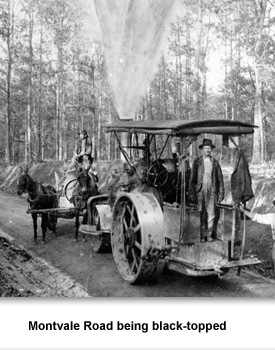
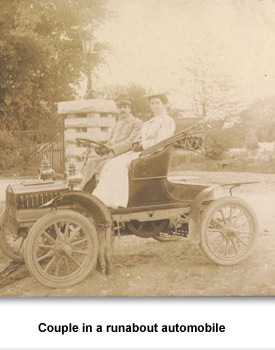
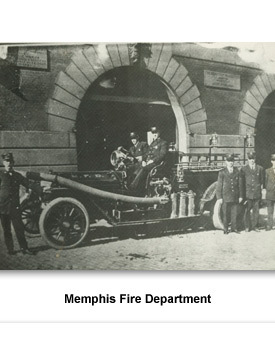
 Sponsored by: National Endowment for the Humanities
Sponsored by: National Endowment for the Humanities